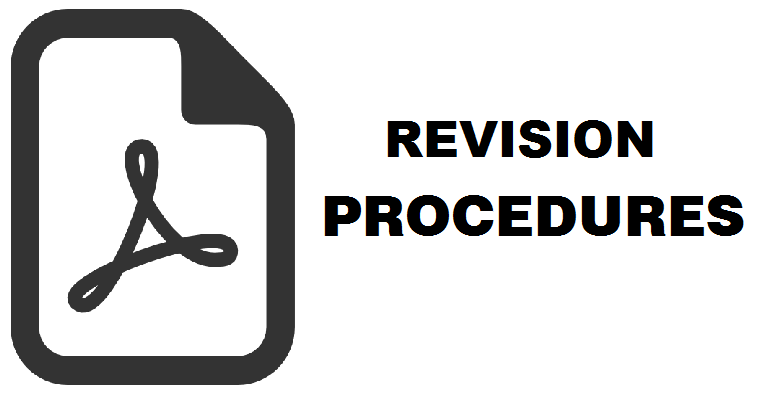Pemanfaatan Citra Landsat 8 Multitemporal dan Model Forest Canopy Density (FCD) untuk Analisis Perubahan Kerapatan Kanopi Hutan di Kawasan Fakultas Geografi Universitas Gadjah Mada Gunung Kelud, Jawa Timur
Shafira Himayah(1*), Hartono Hartono(2), Projo danoedoro(3)
(1) Fakultas Geografi, Universitas Gadjah Mada, Yogyakarta
(2) Fakultas Geografi, Universitas Gadjah Mada, Yogyakarta
(3) Fakultas Geografi, Universitas Gadjah Mada, Yogyakarta
(*) Corresponding Author
Abstract
Penginderaan jauh memiliki keunggulan dalam hal resolusi temporal yang dapat dimanfaatkan untuk meneliti perubahan suatu obyek dalam waktu yang berbeda. Hutan Gunung Kelud mengalami perubahan setelah erupsi tahun 2014. Perubahan tersebut dapat dianalisis dengan memanfaatkan teknologi penginderaan jauh melalui citra multitemporal. Penelitian ini bertujuan untuk mengkaji kemampuan citra Landsat 8 multitemporal dan Forest Canopy Density (FCD) untuk perubahan kerapatan kanopi di Hutan Lindung Gunung Kelud sebelum dan sesudah erupsi tahun 2014.Citra penginderaan jauh yang digunakan adalah citra Landsat 8 perekaman 26 Juni 2013 dan 4 September 2015. Metode yang digunakan adalah pemodelan FCD yang menghasilkan kerapatan kanopi per piksel. Hasil pemodelan FCD kemudian digunakan untuk menganalisis perubahan kerapatan kanopi setelah erupsi. Berdasarkan penelitan ini didapatkan hasil bahwa citra Landsat 8 dapat dipergunakan untuk mengetahui kerapatan kanopi Hutan Lindung Gunung Kelud sebelum dan setelah erupsi dengan masing-masing akurasi sebesar 83,73% dan 81,14%. Terjadi perubahan luas kerapatan kanopi setelah erupsi, dimana terdapat 8833,95 Ha hutan yang mengalami penurunan kerapatan kanopi, sedangkan hutan dengan kerapatan kanopi yang tetap adalah seluas 2149,38 Ha, dan hutan yang mengalami peningkatan kerapatan kanopi adalah seluas 1643,31 Ha.
Remote sensing has an advantage in terms of temporal resolution that can be exploited to examine the changes of an object in different times. Gunung Kelud Forest is changing after the eruption in 2014. The changes can be analyzed by utilizing remote sensing technology through multitemporal imagery. This study aims to examine the capabilities of Landsat 8 multitemporal and Forest Canopy Density (FCD) images for changes in canopy density in Kelud Protection Forest before and after the eruption in 2014. Remote sensing imagery used is Landsat 8 image recording June 26, 2013, and September 4, 2015, The method used is FCD modeling that produces a density of the canopy per pixel. FCD modeling results are then used to analyze changes in density of the canopy after the eruption. Based on this research, it can be concluded that Landsat 8 image can be used to determine the density of canopy of Kelud Protection Forest before and after eruption with 83.73% and 81.14% accuracy respectively. There was a change in the area of the canopy density after the eruption, where there was 8833.95 ha of forest that experienced a decrease in canopy density, whereas forests with fixed canopy densities were 2149.38 Ha, and forests with an increase in canopy density were 1643.31 Ha.
Keywords
Full Text:
PDFReferences
Azizi, Z., Najafi, A., & Sohrabi, H., (2008), Forest Canopy Density Estimating, Using Satellite Image. The International Archive of the Photogrammetry, Remote Sensing and Spatial Information Science. XXXVII. B8. Beijing 2008.
Chuvieco, E., & Huete, A. (2010,) Fundamentals of Satellite Remote Sensing. CRC Press. United States of America. Danoedoro, P. (2012), Pengantar Penginderaan Jauh Digital. Penerbit ANDI. Yogyakarta.
Indriyanto. 2012, Ekologi hutan. Bumi Aksara. Jakarta ITTO/JOFCA. (2003), FCD-Mapper Ver.2 User Guide, Semi-Expert Remote Sensing System for Canopy Density Mapping.
Jamalabad, M. S., Akbar, A. A. (2000), Forest Canopy Density Monitoring, Using Satellite Images. ISPRS Commission VII (17).
Holland. Janssen, L. L. F., Bakker, W. H., Weir, M. J. C., et al. (2000), Principle of Remote Sensing. ITC, Endschede. Netherlands.
Loyd, C. (2013), Landsat Science : Landsat 8 Bands, (melalui http:/www. landsat.gsfc.nasa.gov/?page_id=5377, diakses pada tanggal 21 Desember 2014)
Panta, M. (2003), Analysis of Forest Cover Density and Factors Affecting It Using RS and GIS Technique (A Case Study from Chitwan District of Nepal). International Institute For Geo-Information Science and Earth Observation, Enschede. The Netherlands.
Pemerintah Republik Indonesia. (2008).Peraturan Pemerintah Republik Indonesia nomor 76 tahun 2008 tentang Rehabilitasi dan Reklamasi Hutan. Jakarta.
Riano, D., Chuvieco, E., Salas, J., et al. (2003), Assessment of Different Topographic Corrections in Landsat-TM Data for Mapping Vegetation Types. IEEE Transactions on Geoscience And Remote Sensing, Vol. 41, No. 5, May 2003 : 1056-1061
Rikimaru, A., Roy, P. S., & Miyatake, S. (2002), Tropical Forest Density Mapping. Tropical Ecology 43(1) : 39-47.
Yulianto, S. (2010), Kajian Kemampuan Model Forect Cover Density (FCD) Berbasis Citra Landsat ETM+ Multitemporal untuk Memantau Suksesi Hutan Rawa Gambut di Kalimantan Tengah. Fakultas Geografi, Universitas Gadjah Mada. Yogyakarta.
Article Metrics
Refbacks
- There are currently no refbacks.
Copyright (c) 2017 Majalah Geografi Indonesia

This work is licensed under a Creative Commons Attribution-ShareAlike 4.0 International License.
Volume 35 No 2 the Year 2021 for Volume 39 No 1 the Year 2025
ISSN 0215-1790 (print) ISSN 2540-945X (online)








